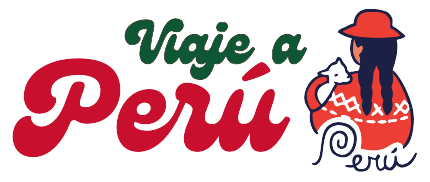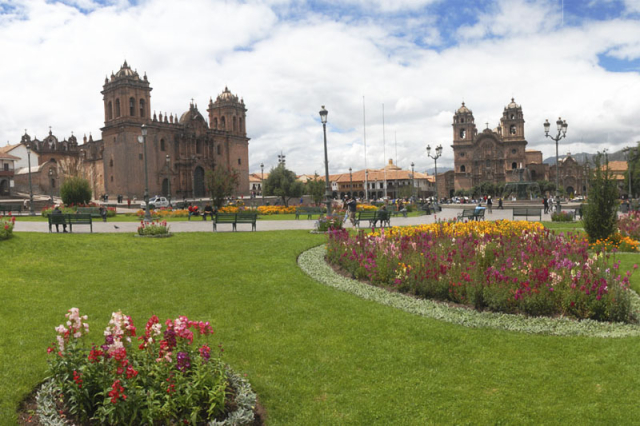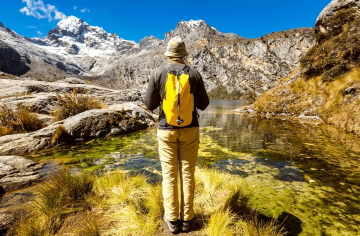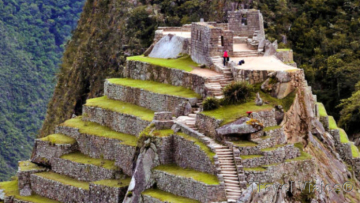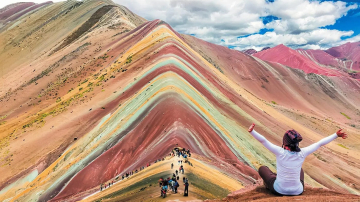Peru is not only known for its Incan heritage , but also for its impressive colonial heritage . During the viceregal era, the Spanish left a deep mark on the country , reflected in majestic buildings, emblematic squares and cultural traditions that still endure.
Cities like Lima, Arequipa and Cajamarca are living witnesses of this rich history. With baroque churches, colonial mansions and cobblestone streets , these destinations offer visitors a unique experience where past and present intertwine. Join us to explore the best colonial cities in Peru and their fascinating historical legacy.
1. Lima: The City of Kings
Lima, founded in 1535 by Francisco Pizarro , is known as "The City of Kings". Its Historic Center, declared a World Heritage Site by UNESCO , is the heart of the colonial legacy.
The Plaza Mayor , surrounded by iconic buildings such as the Government Palace, Lima Cathedral and the Archbishop's Palace, is a great starting point. The Cathedral , in particular, is a masterpiece of Baroque and Renaissance architecture, housing the remains of the city's founder.
Another must-see site is the Convent of San Francisco , famous for its catacombs and impressive library, which houses ancient texts of incalculable value. In addition, the colonial mansions , such as the Casa de Aliaga and the Casa de Osambela , offer a glimpse into the aristocratic life of the time.
2. Arequipa: The White City
Arequipa , known as "The White City" due to the use of sillar, a white volcanic stone , in its buildings, is a destination that combines history, culture and spectacular landscapes. Its Historic Center is also a World Heritage Site.
Arequipa's Plaza de Armas is a charming place, surrounded by the majestic Cathedral and colonial portals. The Arequipa Cathedral , built in the 17th century, is a symbol of the city and stands out for its neoclassical style and its privileged location in front of the Misti volcano.
The Monastery of Santa Catalina , a huge Mudejar-style complex, is another of the city's great treasures. This monastery, which functioned as a miniature city for the nuns, allows visitors to wander through its narrow streets and colorful courtyards, transporting them back in time.
3. Cajamarca: History and Nature
Cajamarca is a jewel of northern Peru, known for being the place where the meeting between the Inca Atahualpa and the Spanish conquistadors took place . This city combines colonial history with impressive landscapes.
Cajamarca's Plaza de Armas is a central point, surrounded by the Cathedral and the Church of San Francisco , both with baroque facades carved in stone . However, one of the most emblematic sites is the Cuarto del Rescate , the place where the Inca Atahualpa offered a room full of gold and silver for his freedom, marking a milestone in the country's history.
In addition to its colonial legacy , Cajamarca is famous for its hot springs, such as the Baños del Inca , which offer a relaxing experience in a natural setting steeped in history.
4. Cusco: The Connection between the Inca and the Colonial
Although Cusco is world famous for its Incan past , it is also notable for its colonial architecture , which is superimposed on the foundations of Incan constructions . This unique contrast has earned it the title of World Heritage Site.
Cusco's Plaza de Armas is an iconic place, surrounded by the imposing Cathedral and the Church of the Society of Jesus , both built on ancient Inca palaces. The Cathedral , with its baroque interior and Cusco art, is a testament to cultural syncretism.
Another must-see is the San Blas neighborhood , known for its cobblestone streets , artisan workshops, and colonial church that houses an impressive carved wooden pulpit. This neighborhood is perfect for those looking for a mix of history and bohemian charm.
5. Trujillo: The City of Eternal Spring
Trujillo, located on the north coast, is famous for its colonial architecture and its proximity to important pre-Columbian archaeological sites.
The Historic Center of Trujillo stands out for its colonial mansions with colorful facades and carved wooden balconies. Places like the Casa de la Emancipación , where the independence of northern Peru was signed, and the Trujillo Cathedral are essential to understanding the history of the city.
Trujillo is also known for its traditional festivities, such as the International Marinera Festival , which celebrates the country's typical dance in an atmosphere full of culture and joy.
Historical tourism in Peru offers a window into the country's colonial past , with cities that have preserved their architecture , traditions and cultural legacy. From the cobblestone streets of Cusco to the colorful mansions of Trujillo , each city tells a unique story that reflects the mix of Spanish and indigenous influences.
If you are looking for a trip that combines history, culture and unforgettable landscapes , these colonial cities in Peru are essential destinations. Dare to explore their squares, churches and streets full of charm to discover the legacy that defines modern Peru.
We invite you to learn more about Peru here: Blogs from Peru.
